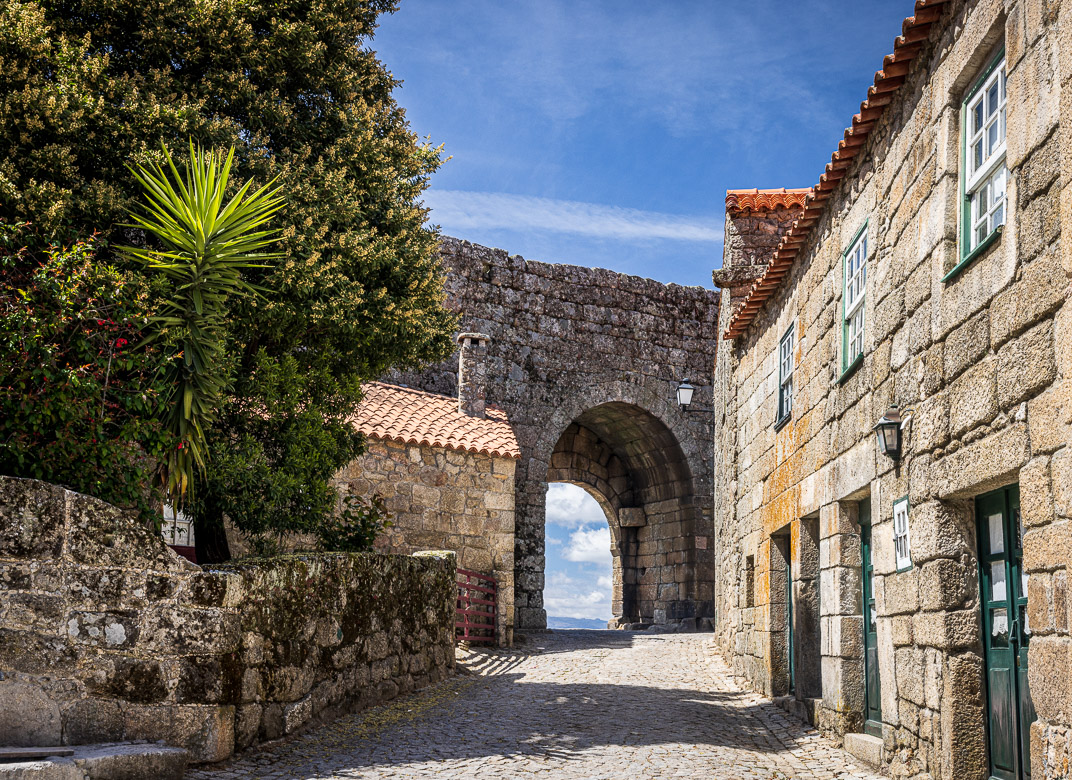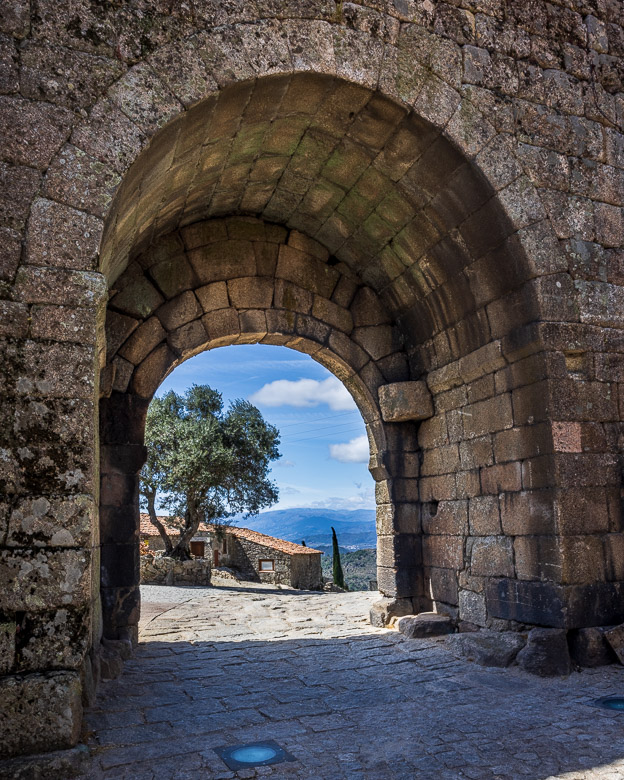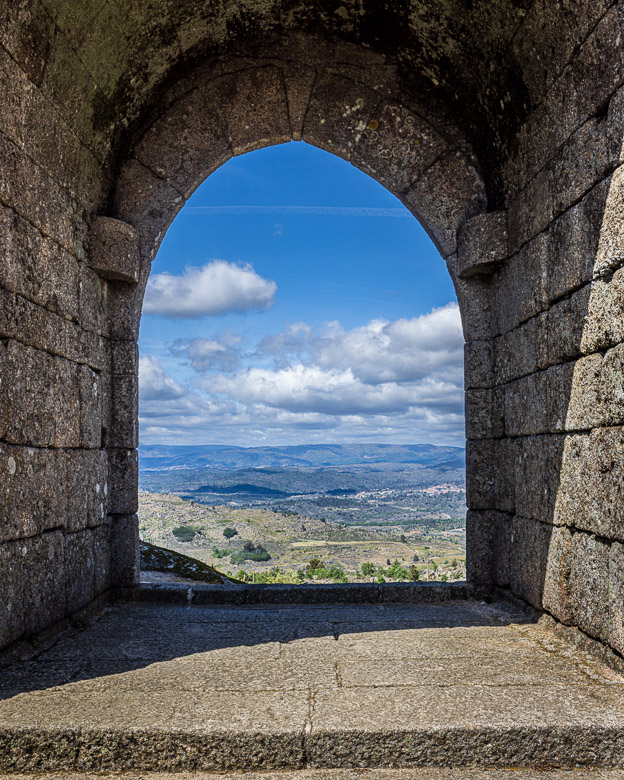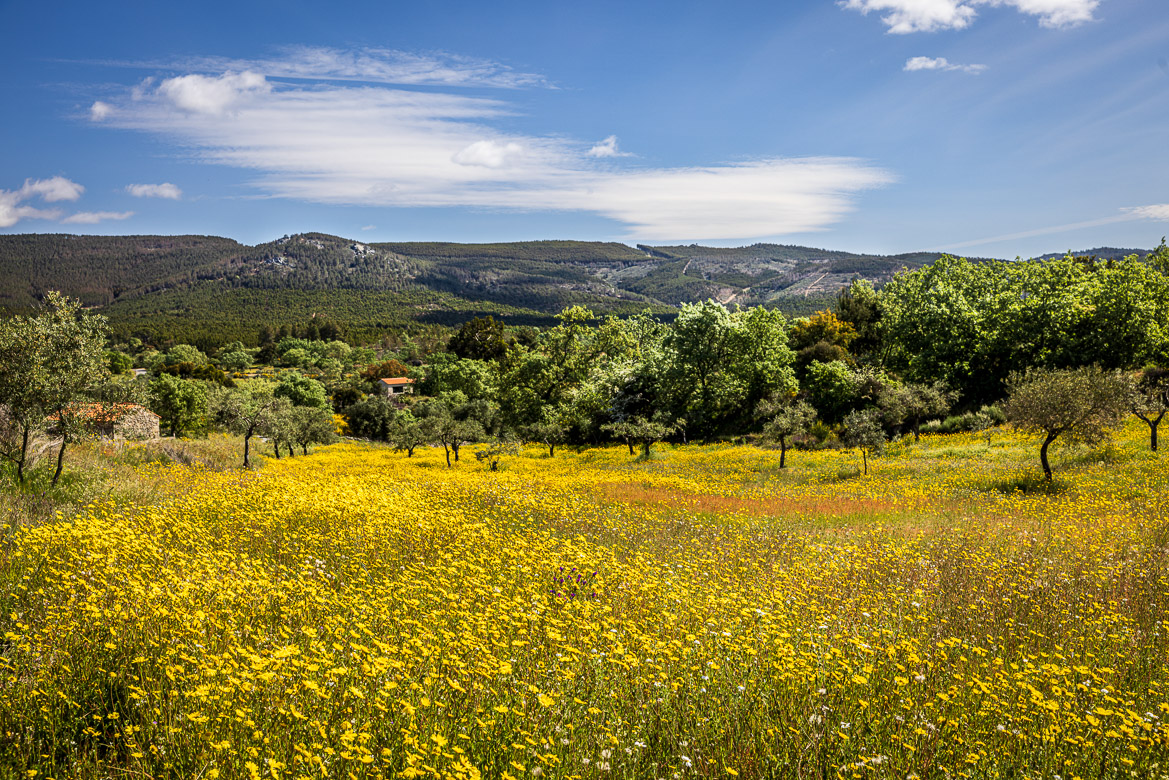
Leaving Monsanto we were on our way northwest crossing the highest mountain range in Portugal, the Estrela Mountains or Parque Natural da Serra da Estrela. In April the fields were covered in wildflowers and lots stone boulders similar to what we saw in Monsanto (but not quite as large). Before we reached Serra da Estrela we approached our lunch stop – Sortelha.
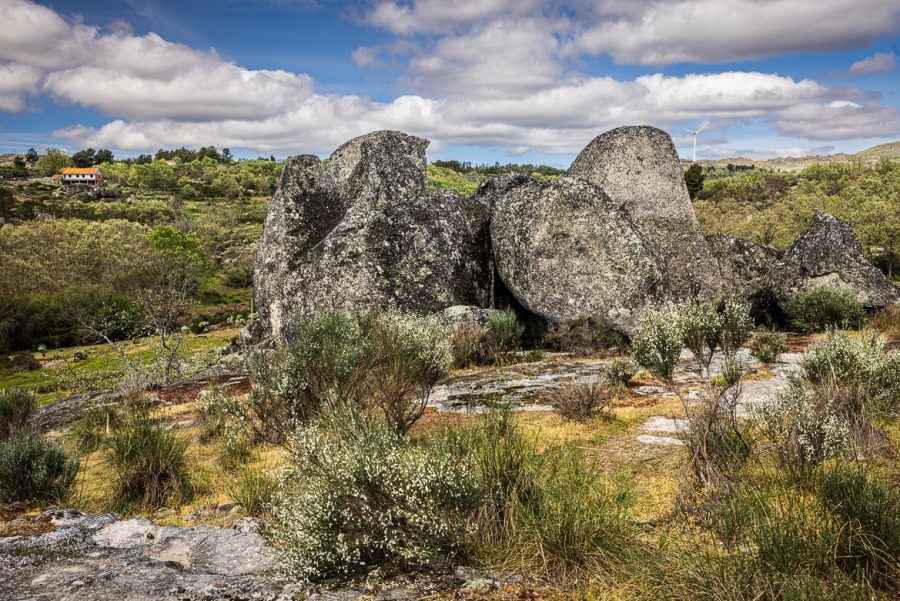
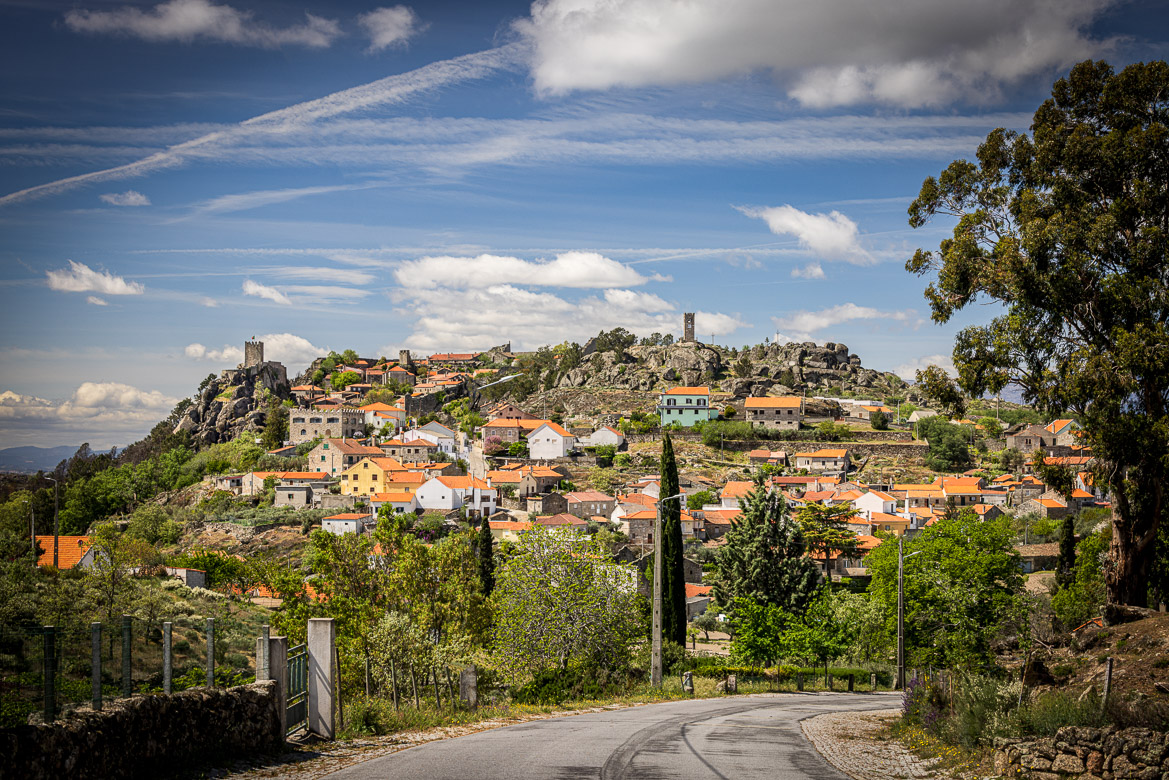
The oldest part of the village of Sortelha is contained within the castle walls. Sortelha was built in the 13th century and the castle walls and keep dates from this period as do many of the original buildings. Outside the walls are a cluster of more modern buildings, as you can see in the images. But our focus was on the old medieval town and its castle and ramparts.
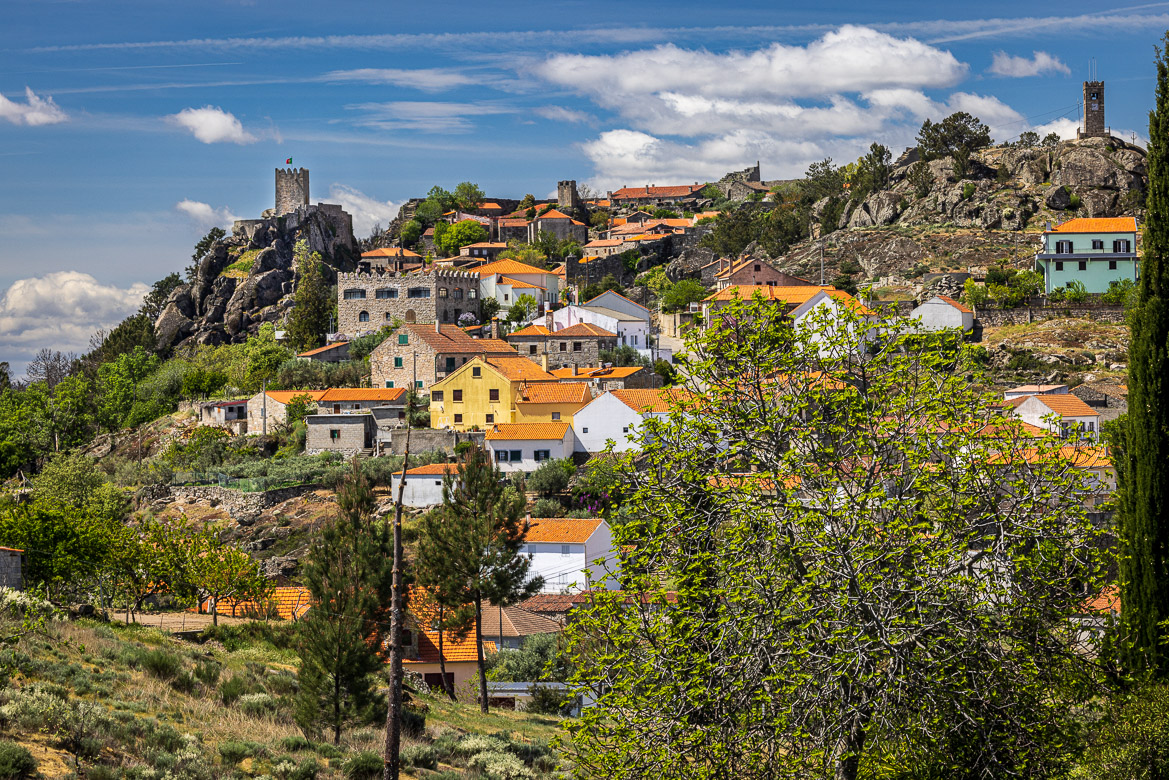
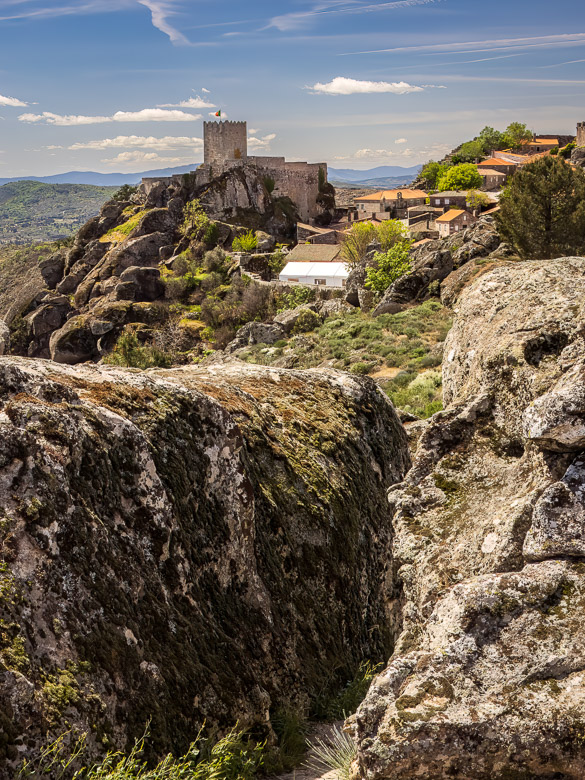
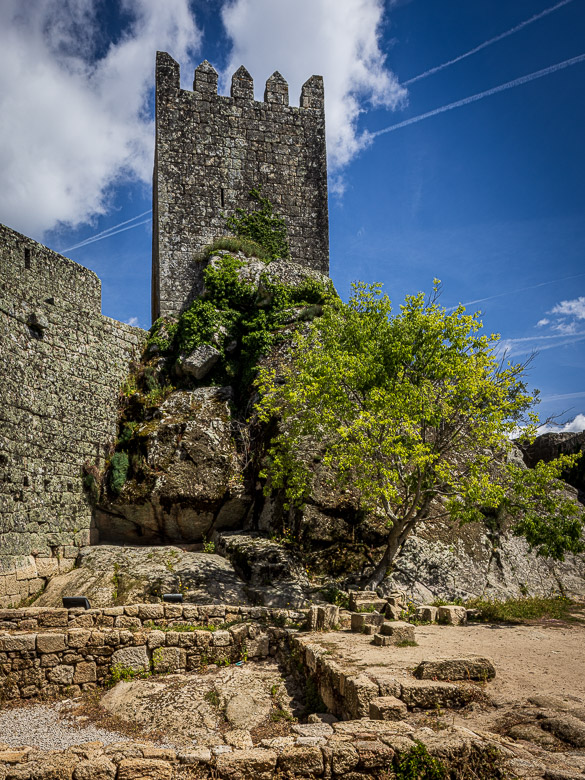
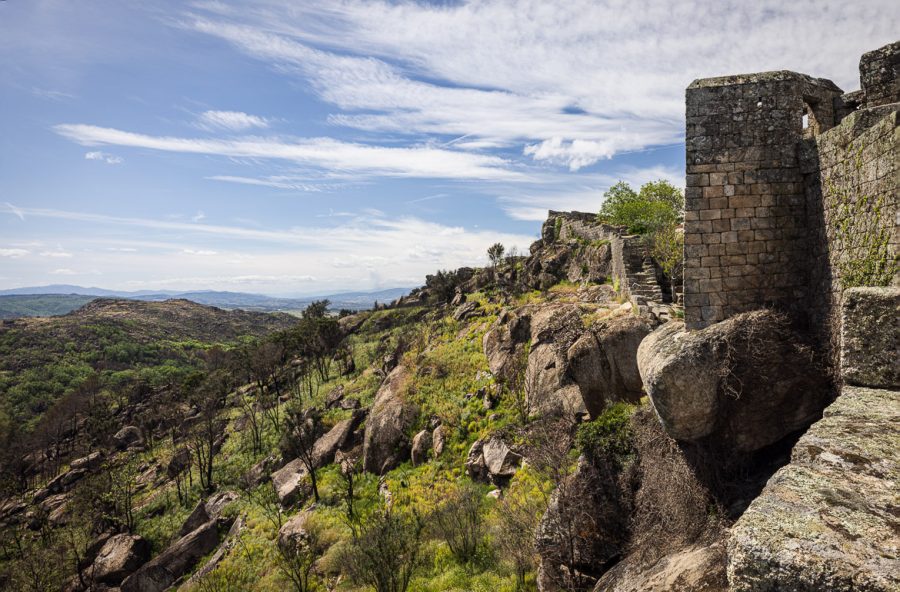
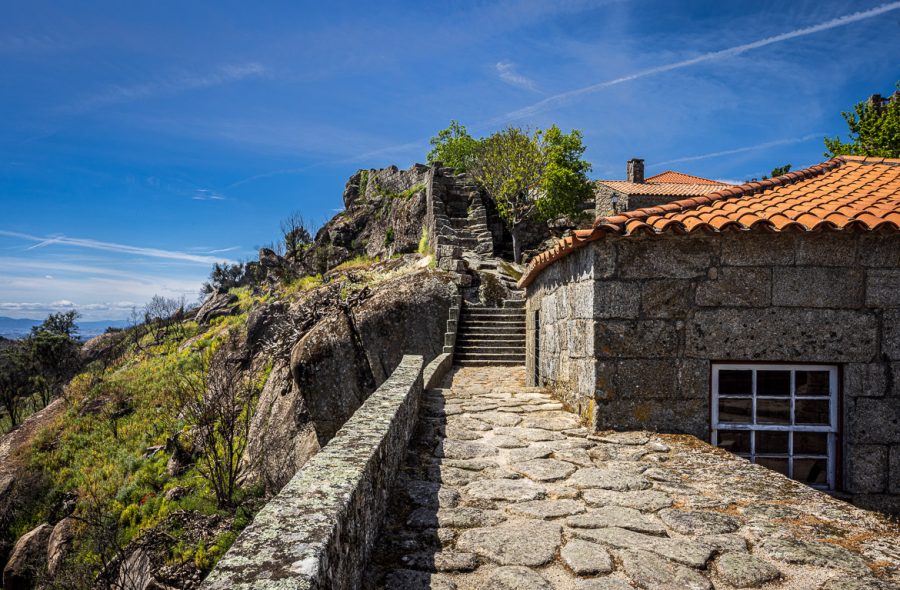
Inside the walled town a lane led up to the town square, where the church and the entrance to the castle itself were situated. The buildings here are all from early 12th to early 13th C and some stones have inscriptions in the Arabic alphabet, showing that part of the town was erected during Moorish times. We entered the castle walls through a gothic gate and the main street brought us along the path seen in the image below.
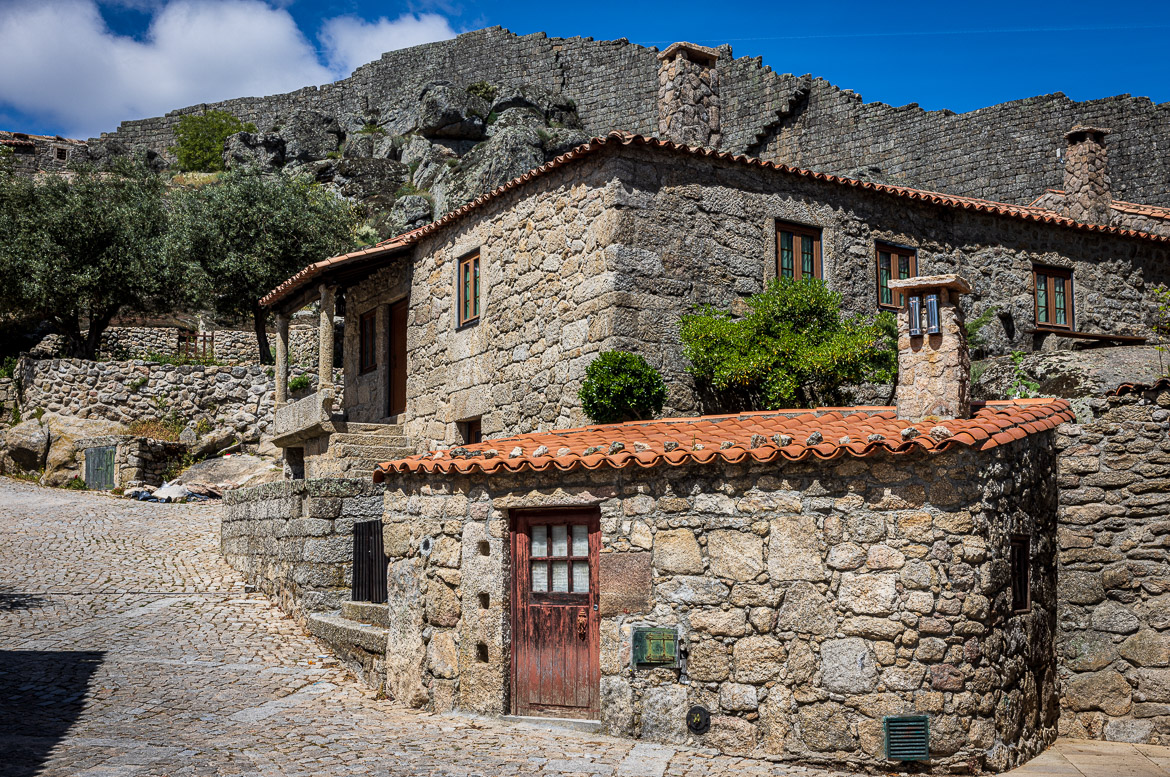
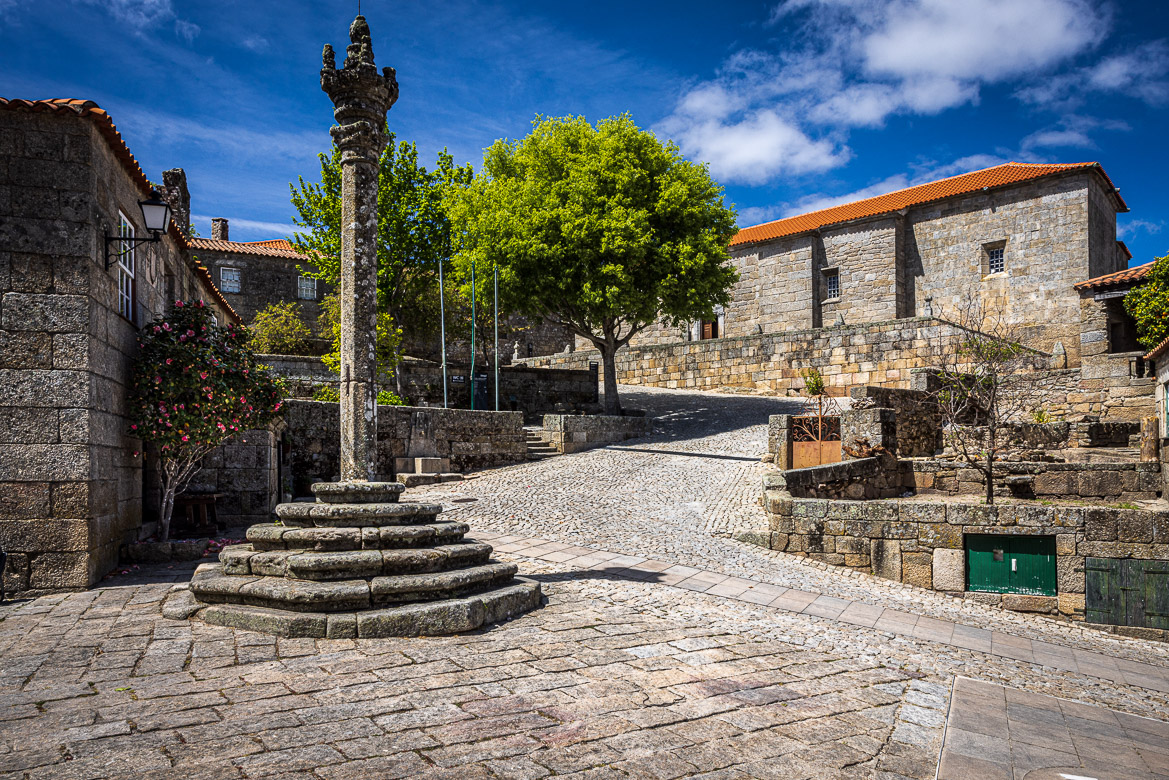
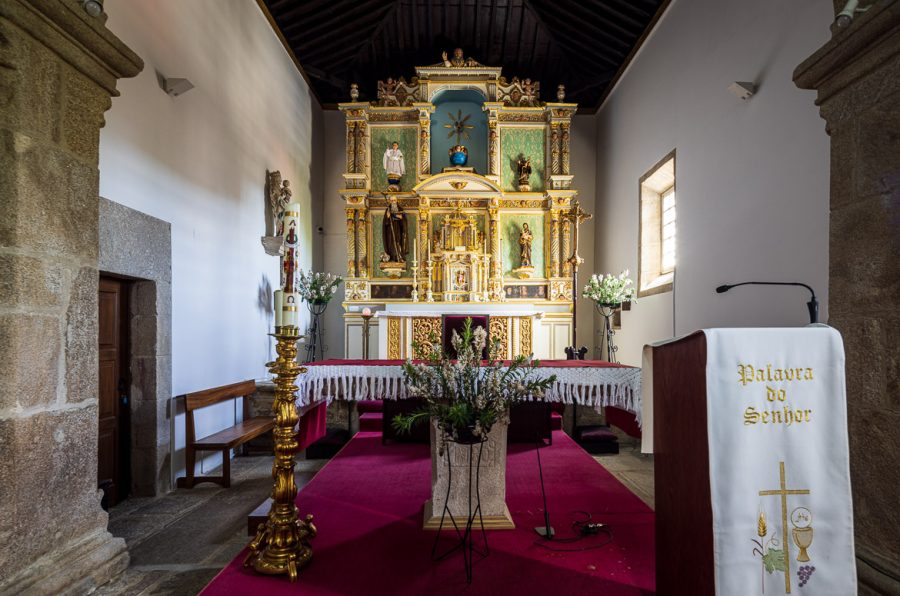
At the top of the hill, opposite the gothic entrance to the town were two smaller ports to enter or exit the town, but these were very difficult to reach from the outside. The first one, in the image below and the left image of those further down, led to the churchyard and a building that originally may have hold a leper colony. The other gate led straight out to wonderful views of the surrounding landscape, although I don’t think the gate was built for the medieval townsfolk to admire the views.
